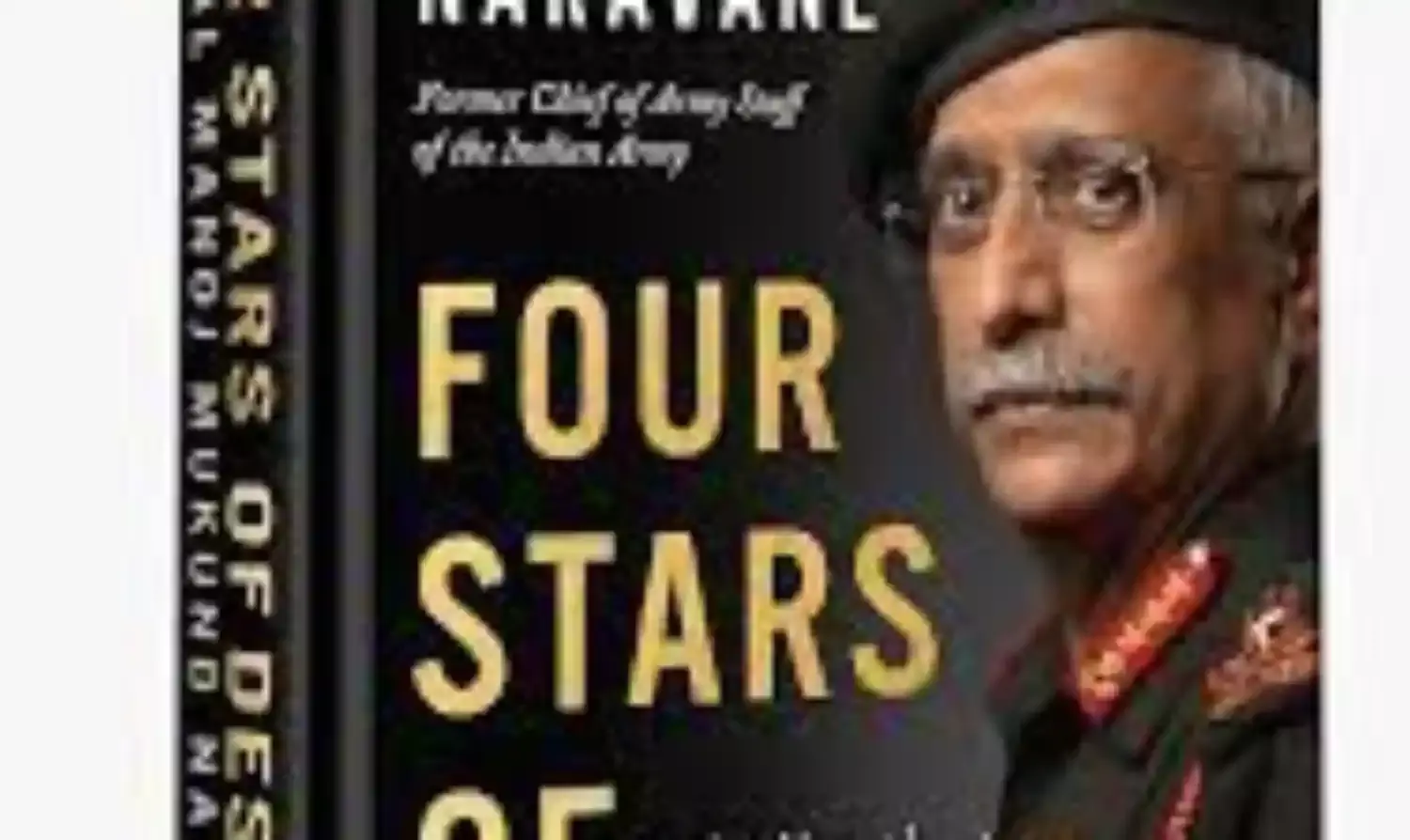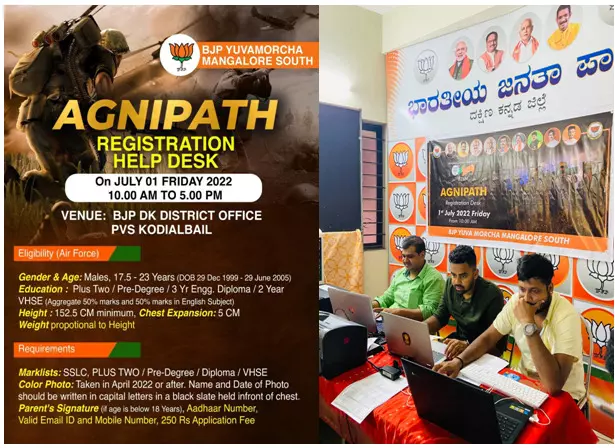UnderSoldiers Unraveled
Former Army Chief General M. M. Naravane’s autobiography ‘Four Stars of Destiny’ will soon be released

Excerpts of former Army Chief General M. M. Naravane’s autobiography ‘Four Stars of Destiny’ are in the media. These partly cover India’s response to the Chinese aggression in Ladakh during 2020 and the ‘Agnipath scheme’ imposed on our military. The book will be released next month, with or without government approval because Penguin Random House is an international publisher. Amazon is already taking advance orders for the book.
Naravane writes he was under orders not to open fire on the People's Liberation Army (PLA). When he told Defence Minister Rajnath Singh about advancing PLA tanks and troops, Rajnath told him he had spoken to the Prime Minister and “Jo ucchit samjho woh karo”. However, when informed of enemy tanks and troops coming within 500m, the Defence Minister, External Affairs Minister, National Security Advisor (NSA), and the Chief of Defence Staff (CDS) did not respond to his query of how to deal with the criticality.
Not much could be expected from Rajnath of ‘Kadi Ninda’, ‘Ghor Ninda’ fame, but couldn’t Naravane force a response from Rajnath by telling him fire needed to be opened to stop the advancing enemy already in Indian Territory? Wasn’t it ‘ucchit’ to fire warning shots, see enemy reaction and then decide further action?
Did flattening Chinese defences with all in-range medium artillery at Nathu La in 1967 start a war? Wasn’t that decision taken at the level of the then the GOC of the Sikkim Division, Major General Sagat Singh? The fallout of India’s pusillanimity against the Chinese aggression in 2020 in Ladakh is covered here, the government’s denials and cover-ups notwithstanding.
Next is the issue of Agnipath aka Agniveers. The title of this article says “undersoldiers” because government has decreed Agniveers are “below soldier rank”. By this analogy, soldiers should be “Shoorveers” and higher rank more fancy names, although the government’s deep state is doing its utmost to undermine the military, the Army in particular, target the psyche of soldiers and create a divide between officers and ranks below.
Naravane writes he sounded the Prime Minister in 2020 of the ‘Tour of Duty’ scheme, a short-service option. A “limited number” of soldiers could be enrolled and released after the completion of their ‘tour’, with the option of re-enlisting for another tour, if found fit. He has not mentioned what he meant by “limited numbers” but according to the then sources within Army HQ, the proposal was for 1000 youth to be enrolled on an experimental basis.
Naravane writes that the Prime Minister's Office came back “after some time” with the proposal that entire military recruitment should eventually be Agniveer-based. Thus making it a tri-Service matter that surprised all three services. The issue, therefore, was handled by the CDS General Bipin Rawat.
What was Rawat’s role in shaping the final Agnipath scheme is not known, but how he became Army Chief and then CDS, what really are the CDS and DMA and why Army recruitment was stopped for two years to impose Agnipath can be read here. Rawat was also the first Army Chief to be awarded PVSM for ‘services’ rendered as Chief.
Interestingly, a social media post alleges that Vikram Singh, Chairman Central Association of Private Security Industry, sold the Agnipath idea to the Rashtriya Swayamsevak Sangh (RSS). The RSS probably perceived they will be able to raise a private army of almost two lakh Agniveers, released by the military over five-seven years.
The media blitz in the intervening period focused on the expenditure on military pensions without comparing it with the much higher expense on civil and other government services, read details here. In fact, a civilian defence employee is four times more expensive than his uniformed counterpart or retiree.
Notably, speaking to ‘India Today TV’ on June 23, 2021, CDS General Rawat had criticised the “short-duration enlistment” of soldiers in the PLA, and lack of experience and training. Perhaps this was the reason the scheme was not implemented in 2021 but when implemented in 2022 was short-duration tenure and drastically reduced basic recruit training.
When Agnipath was rolled out in June 2022, the reason given was to lower the age profile of the military. Defence Minister Rajnath Singh publicly stated it had “nothing” to do with financial expenditure.
The ruling was for only 25% of around 46,000 Agniveers to be absorbed in the military for another 15 years after the first four years. Naravane wanted 75% absorption, perhaps because of the high manpower shortages (though not specifically mentioned in excerpts). He also recalls the first year starting monthly salary for Agniveers was Rs 20,000 (all inclusive) which was just not acceptable.
The question is why did Service Chiefs not represent, if they had reservations when the scheme was imposed, especially Naravane when the Army was the most affected and the post of CDS was lying vacant? It was obvious Agnipath was not examined thoroughly and was introduced for political reasons including galloping unemployment. This is why the BJP later put up stalls to sponsor youth for Agniveer registration.

Trained in handling weapons, there is speculation some released Agniveers may become ‘private armies’ of politicians and mafia dons, forge their own mafias and become dons and politicians, leading to a radicalised and violent society.
Ironically, the following points are given scant regard:
- Why was basic recruit training allowed to be drastically reduced and how adversely this affects at the cutting edge?
- How is a unit deployed wide-spread in an operational area expected to provide on job training to Agniveers?
- What skills can Agniveers, with reduced basic recruit training, acquire in initial service when former Service Chiefs maintain it takes 6-8 years to become skilled soldiers?
- How would Agniveers be graded in short-period knowing they are from the PMO’s pet-scheme, there are instructions to use them ‘sparingly’ in some places?
- What would be the mental makeup of Agniveers not knowing their employment after four years?
Agnipath stands implemented despite heavy skepticism within the military and veterans albeit latter are considered inconsequential. There has been no explanation for the choices made by the government which as per Naravane’s book were against the recommendations of the Army Chief.
Perhaps it is the belief there would be no war, misrepresentation of PM Modi’s call “this is not the era of war”, and NSA Ajit Doval’s talk at the police academy in 2014 that there will be no war and everything has to be handled by the police.
Finally, there is no dearth of ‘yes men’ to justify Agnipath but the bottom line is we are losing the advantage we have over the PLA in terms of manpower with Agniveers and our response in Ladakh shows we have lost the spine to stand up to China. There is no dearth of money in the country. According to Rajnath, Agnipath has nothing to do with finances anyway. War with China is inevitable; the only question is when?
Lt General PRAKASH KATOCH is a veteran of the Indian Army. Views expressed are the writer’s own.



